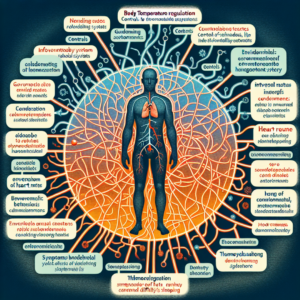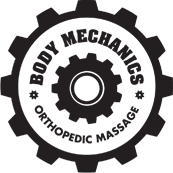Heat Dysregulation and Massage
You may not think of massage when you think of heat dysregulation; in fact, you may not think of wanting to be touched at all. In terms of our ability to ‘feel good,’ the interplay between the external temperature and our internal nervous system is a delicate balance that affects our overall well-being. Heat dysregulation, often exacerbated during hot weather or by certain medical conditions, can significantly impact the nervous system, leading to discomfort and various health challenges. If you have been in and around the New York area in the last few weeks, you might have noticed some short tempers, some snappy comebacks, and some cranky, dysregulated people! This is a prime example of the correlation between heat dysregulation and human behavior. Basically, the heat is STRESS! When you are stressed, engaging in activities like massage can help with the dysregulation.
The Mechanism of Heat Dysregulation
Our body’s ability to regulate temperature is a complex process governed by the autonomic nervous system (ANS). This system controls involuntary functions like heart rate, digestion, and, crucially, thermoregulation. When exposed to excessive heat, whether environmental or due to internal factors, the ANS can struggle to maintain homeostasis. This dysregulation can manifest in symptoms such as:
Increased Heart Rate: The body attempts to cool itself through increased circulation, leading to a higher heart rate.
Excessive Sweating: An essential cooling mechanism, but excessive sweating can lead to electrolyte imbalances and dehydration.
Fatigue and Discomfort: Heat stress can cause general malaise, headaches, and a feeling of lethargy. “Body heat increases due to work rate, so core body temperature rises” – Source
Mood Changes: Heat can cause behavior changes, memory, executive functioning and difficulty sleeping. -source

“Heat related illnesses and death are largely preventable with proper planning, education, and action. Identifying Potential Heat Risks” -Source
How Massage Therapy Helps Heat Dysregulation
Massage therapy offers a number of ways to mitigate the effects of heat dysregulation on the nervous system as massage therapy’s primary mechanism is nervous system-based. It promotes feelings of calm, down-regulation and reduces anxiety:
1. Promoting Rest, Digest and Relaxation
Massage techniques such as Swedish massage and deep tissue massage enhance rest and lymphatic drainage. This downregulation helps slow the heart rate and dissipate heat trapped in tissues, assisting the body’s natural cooling mechanisms.
2. Reducing Muscle Tension
Heat dysregulation often coincides with muscle stiffness and tension. Therapeutic massage releases muscle knots and tension, improving flexibility and reducing discomfort associated with heat-induced muscle cramps.
3. Regulate & Calm Your Nervous System
The soothing touch of massage triggers like Swedish massage soothes the parasympathetic nervous system (PNS) response, which counters the sympathetic nervous system’s (SNS) stress response. This shift promotes relaxation, lowers heart rate, and induces a state of calm conducive to temperature regulation.
4. Enhancing Fluid Balance
Through gentle manipulation, massage can encourage the movement of lymphatic fluid, aiding in putting you into a rest and digest state so your body can do more of what it does better. This helps with repair, recovery, and fluid moving. This process supports the body’s ability to maintain proper fluid balance, which is crucial during periods of heat stress.
5. Restores Restful Sleep
Heat-related discomfort can disrupt sleep. Massage therapy can promote relaxation and better sleep quality, aiding in recovery from heat stress.

How Can You Use Massage to Beat the Heat?
When you are experiencing dysregulation, know the signs and take action. Dysregulation is a stressor on the body and there are a lot of interventions that can help:
Cooling Areas and Times: Incorporate a cooling plan into your wellness. Many of us look forward to summer, but being out in the sun every day in extended heat can lead to heat intolerance. Plan indoor activities in cool spaces that help you relax and regulate. Massage and acupuncture might be excellent activities.
Essential Hydration Tips: Make sure you are well hydrated before and after sessions. It is not typically necessary to drink extra water before or after a massage, despite the popular myth of detoxification, however in extreme heat situations, hydration is essential if you are losing extra fluids through sweating.
Communication: Maintain an open dialogue with your therapist about your comfort. Take blankets off in the session and only work with sheets if needed. Ask if the therapist can add cold towels to your session. If you are struggling with the heat and sleep tell a professional. Remember, heat exhaustion is dangerous. Massage therapists in NY are more than wellness professionals, they are healthcare workers who can point you in the right direction of a referral to your primary care doctor.
Signs of heat exhaustion that require awareness and behavior modification:
The Mayo Clinic lists heat exhaustion as the following symptoms
Cool moist skin with goosebumps
Heavy sweating
Fatigue
Dizzyness
Nausea
Cramps
Headaches
Heat stroke is far more serious and needs emergency medical care. Listen to your body and SLOW down before you need professional intervention.
“The sweating mechanism fails, and the body is unable to cool down. When heat stroke occurs, the body temperature can rise to 106°F or higher within 10 to 15 minutes” – Source
Conclusion about Massage and Heat
The intricate connection between heat dysregulation and the nervous system highlights the significance of holistic approaches like massage therapy in promoting overall well-being. By comprehending the underlying mechanisms, massage therapists can effectively utilize their skills to alleviate heat-related discomfort and enhance clients’ health. It is not a medical intervention for heat stroke or for heat exhaustion but it can help prevent you from getting to that point. Whether during hot summer months or in the presence of specific health conditions, the therapeutic benefits of massage offer relief and restoration, making it a valuable ally in the pursuit of optimal health.
Massage therapy isn’t just about relaxation; it’s a potent tool for restoring harmony between body and mind, especially in the face of external challenges like heat dysregulation. Through skilled touch and a deep understanding of physiological responses, massage therapists can help clients navigate these challenges and emerge feeling rejuvenated and revitalized.
If you are looking to book with us, know that both of our offices are centrally air-conditioned for your comfort. Come beat the heat with us!
